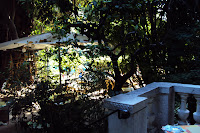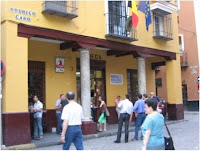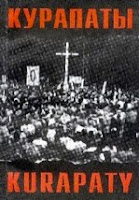Twelve Years On ...

I've always loved this time of year: sun's still strong during the day, nights begin to take on a pleasant chill. Things feel more orderly, predictable as kids are back at school, schedules are set, football's constantly on TV. Leaves start to yellow, some languorously dance down to the ground. Twelve years ago, I worked in book publishing in New York's famed Flatiron Building (second floor, Fifth Avenue side). The day began bright and clear, not nearly as humid as today. It was Election Day in New York and the birthday of one of my dearest childhood friends. These things were on my mind as I hurried up the side stairs to my office, maybe 15 minutes before nine. I logged into my computer, started to check email and then wondered why it was so quiet. I had headed into the building from the south, from the Broadway side; after all, the Flatiron, like one old grouchy traffic cop, divides Fifth Avenue from Broadway at 23rd Street. The devastation of the day was behind...





